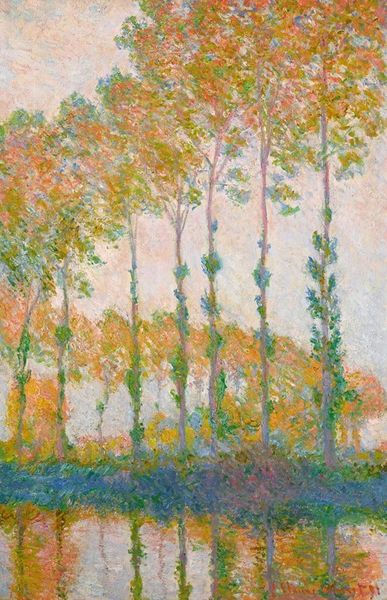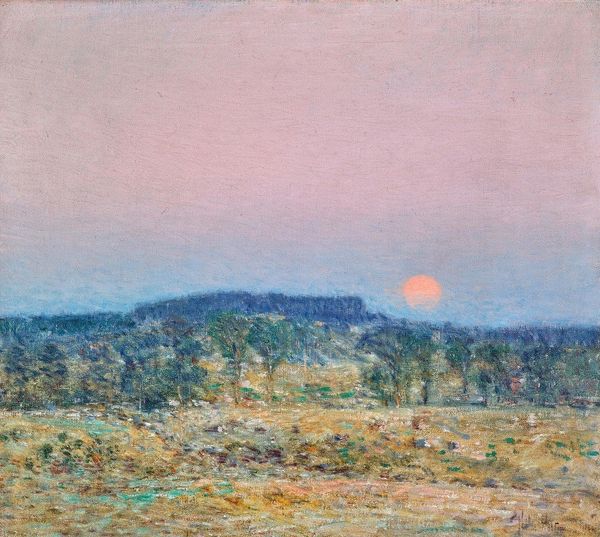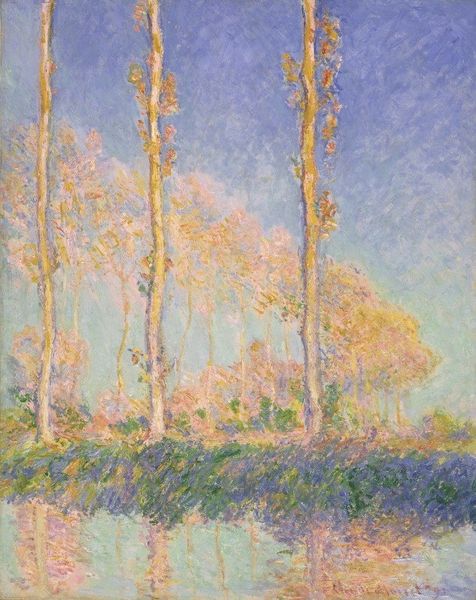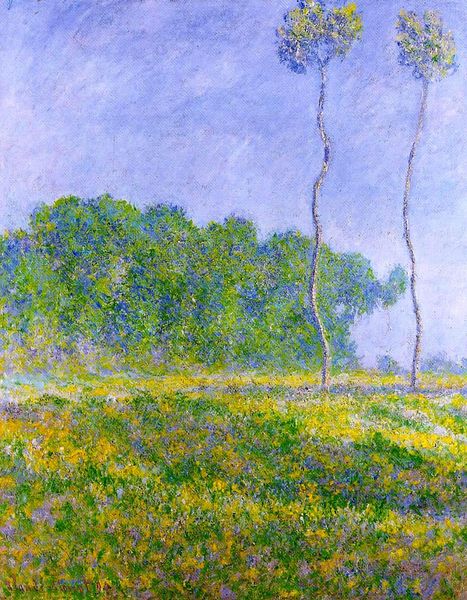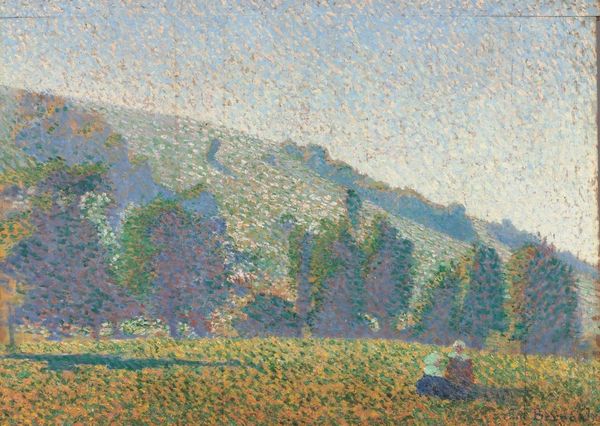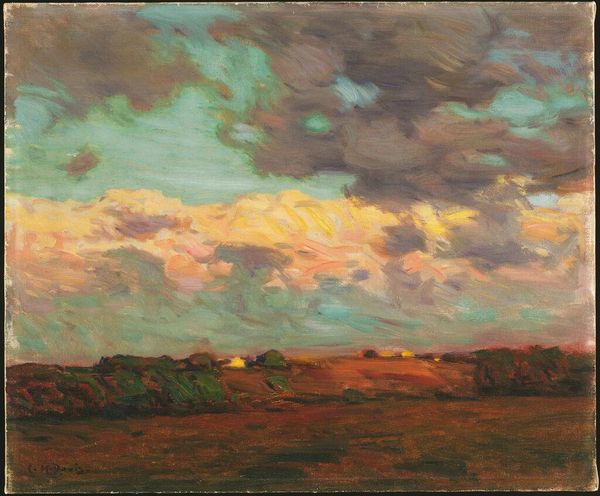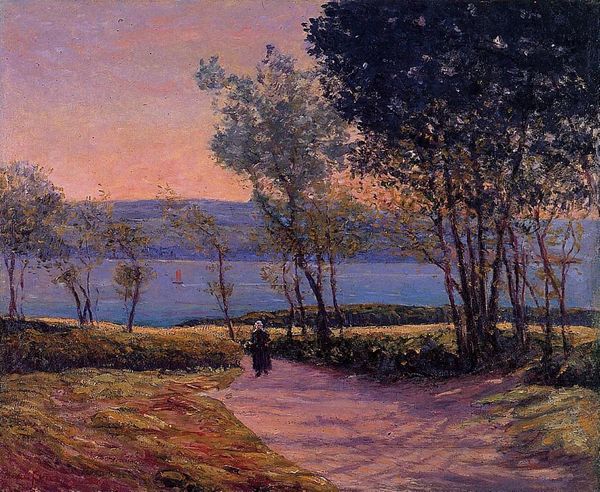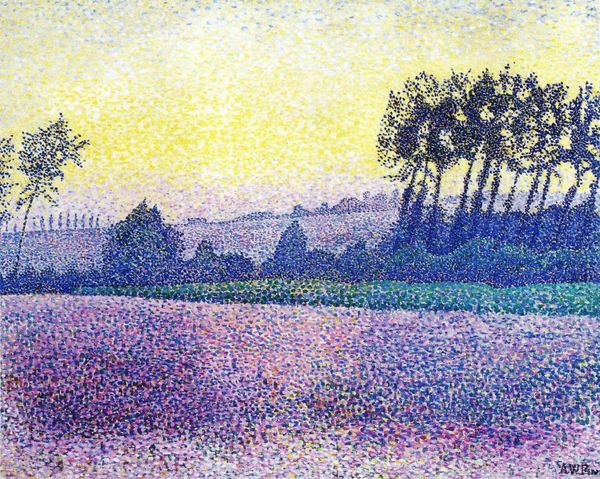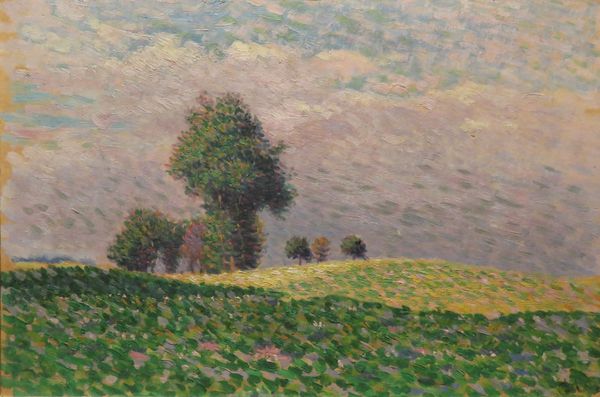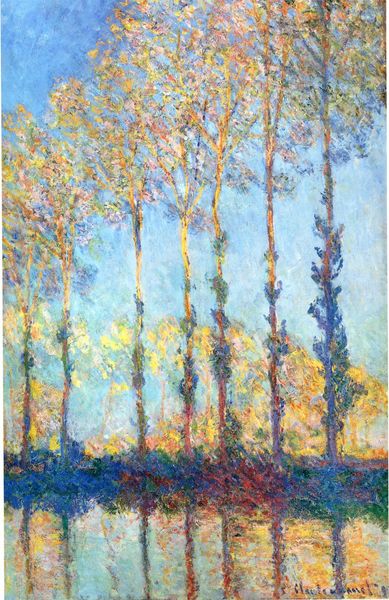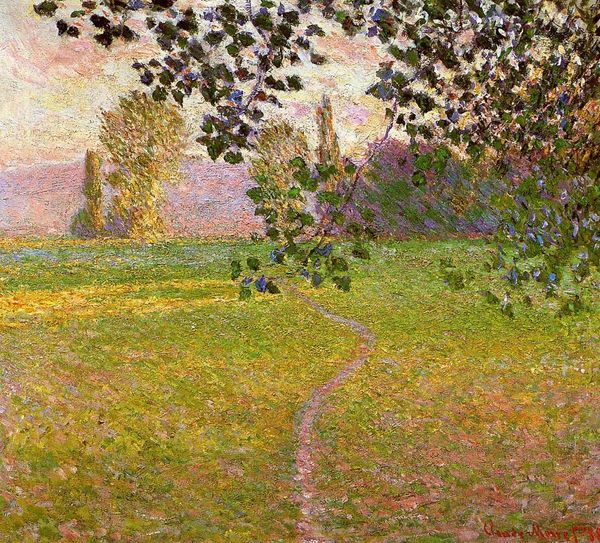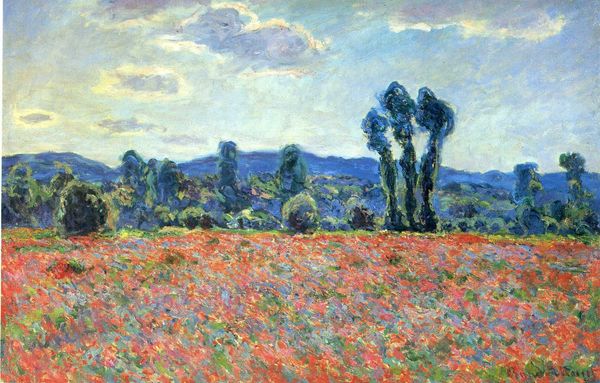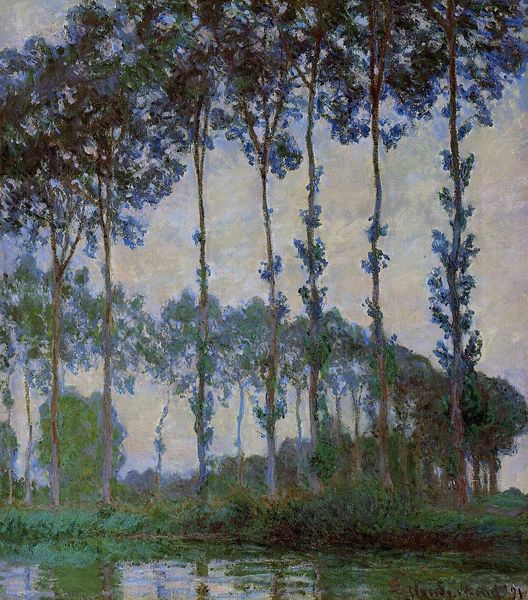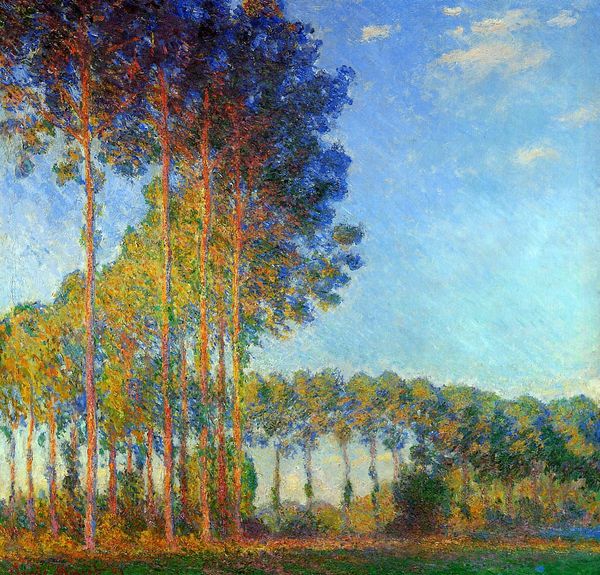
Dimensions: 16 1/8 x 24 3/16 in. (40.96 x 61.44 cm) (canvas)25 x 33 1/16 in. (63.5 x 83.98 cm) (outer frame)
Copyright: No Copyright - United States
Curator: This is "Evening," an oil on canvas completed around 1910 by Birger Sandzén, found here at the Minneapolis Institute of Art. Editor: It's a peaceful scene, really—a quiet, still landscape that almost vibrates with color. The brushstrokes give it a soft, dreamlike quality. Curator: Sandzén was deeply influenced by Impressionism and Post-Impressionism, notably the pointillist technique. You see how he builds up the image with tiny dots of color? This was crucial in how the The Ancients worked too, so the overall feeling is light and luminosity. Editor: Precisely. Look at how he juxtaposes pinks and blues in the sky. It creates an incredible sense of depth and atmospheric perspective despite the limited palette. Then consider the political discourse during the time, with its limitations and restraints placed upon women; a woman was thought to need rescuing. I suppose painting *en plein air* gave Sandzén freedom he hadn’t realized he needed. Curator: And this romantic style makes it hard to find any connection with political unrest during its time. Instead, we find this choice evokes a sense of wonder—almost spiritual. It’s a very romantic interpretation of nature. Editor: Yes, but his nature—although he sought a means of freedom that it represented—was still his refuge. Did this mean Sandzén didn't believe a woman could stand for her own rights? That a man should be responsible for protecting women who work outdoors and paint in this setting? Curator: It’s important to remember Sandzén’s historical context. He occupied a privileged position and projected a certain ideal onto it through the art. What does this painting mean for today's intersectional, feminist viewpoints? Editor: Even so, the beauty remains—how the strokes catch the light, how color renders emotions—there is still much for all people to love and understand through Sandzén's artistic view. Curator: And through such explorations of aesthetic approaches alongside nuanced understanding of its origin, we find a balanced means of communication, both in our perspectives of this work and in what we hope it projects to all patrons, present and future.
Comments
minneapolisinstituteofart almost 2 years ago
⋮
Born and educated in Sweden, Sandzén emigrated to the United States at the age of 23. He settled in Lindsborg, Kansas, where he held a lifelong professorship at Bethany College. Sandzén's technique is marked by a rich, inventive, high-key colorism executed in a pointillist style. His work is inspired by the landscape of the western United States, from summers spent in Colorado, Utah, and New Mexico.
Join the conversation
Join millions of artists and users on Artera today and experience the ultimate creative platform.
